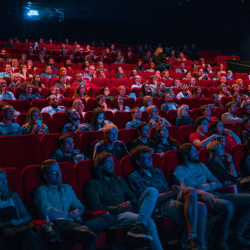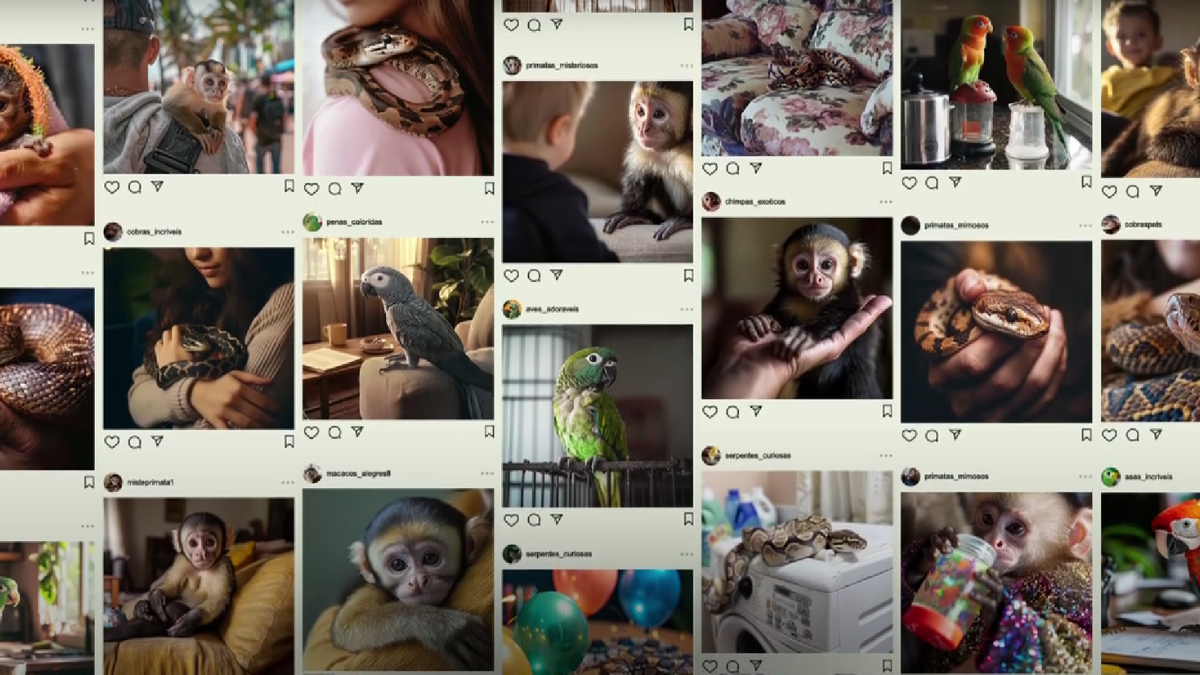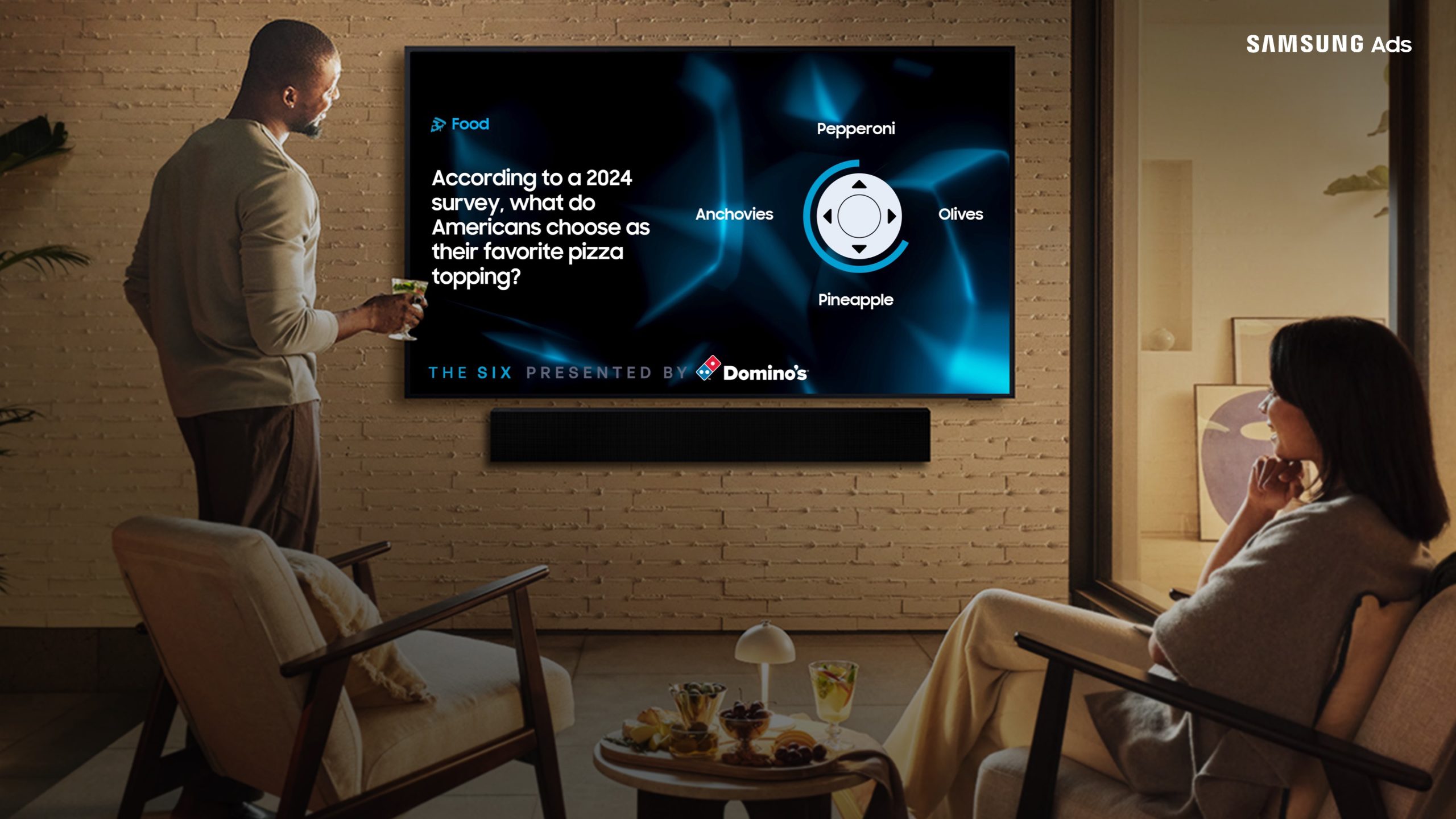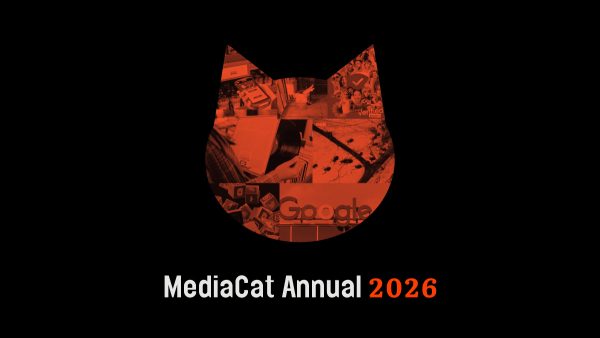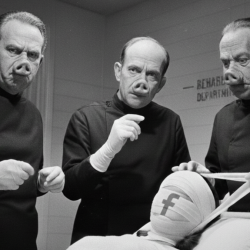Nick Manning doesn’t need to be crusading for a better advertising industry. He built and sold a successful media agency (Manning Gottlieb Media, now MG OMD) in the 90s, held senior network jobs, spent a decade in the C-suite at Ebiquity, and is now a consultant. Unless he has the spending habits and investing instincts of Nicolas Cage, Manning’s probably doing fine.
But in 2024 he, along with fellow agency veteran Brian Jacobs, began a movement, called Advertising: Who Cares?, to help the industry ‘get its mojo back’, by collecting the best thinking from around the world into one place. Since then, he’s been on a tear to get his message out.
Fresh from speaking gigs at industry conferences in Brussels and London, Manning sat down with MediaCat to tell us why he still cares about advertising, where the industry has gone wrong and how it can go right. What follows is an edited account of that conversation.
You’ve recently returned from the World Federation of Advertisers’ (WFA’s) Global Marketer Week in Brussels. What was the mood like?
Apprehensive. People are concerned about the geopolitical situation, and they have every right to be. They’re very concerned about the macroeconomic situation, especially in relation to the US tariffs, but also the looming threat of recession. Everybody is under pressure, and they’re very apprehensive about the effect of artificial intelligence, not just in terms of generative AI and the impact upon the industry, but the general AI that is now powering the new platforms that are coming from the holding company groups, and also from the likes of Meta and Google and Amazon. So we’re in a time of enormous flux and, unsurprisingly, people are a little bit skittish, bordering on the fearful.
Having said all that, at the big Thursday event hosted by the Union of Belgian Advertisers — 2,500 people in a rock concert venue — there were the best presentations I’ve seen for years; the mood was extremely positive, and the people who are leading the industry are doing a great job.
What was the message of the presentations that you thought were so good?
The best presentation of all was given by (serial tech entrepreneur) Peter Hinssen. It was about artificial intelligence and its effect on people’s lives. It’s very easy to slip into what is going to be the effect on the advertising industry when we’re talking about AI, but the first thing that people should think about is how it’s going to change the way that people live their lives.
On the way here this morning, I saw my first ad for one of the new [AI] agents that are hitting the market now. It came from Salesforce and they’re advertising their new agent that will help people effectively customise the way that they live their lives. It’s going to revolutionise search and discovery, and it’s going to mean far fewer website visits
We’re moving very, very swiftly from chatbots to do-bots, and that’s going to have a massive impact on people, and that’s going to have a massive downstream impact on advertising, and the industry is not ready for it yet. It’s been struggling [since] the transition from the analogue age to the digital age — you can’t describe the digital advertising industry as being a healthy one — and now here’s the next wave.
You were also at the Marketing Procurement iQ conference in London. Was it more of the same there in terms of mood?
It was extremely different, and one of the issues that is very clear is that marketing people are from Venus and procurement people are from Mars. There’s a massive gulf between them, and one of the things I said — to a room full of slightly glazed people — was, ‘you cannot allow this to happen’.
The words are marketing procurement, and if procurement people don’t understand the world of marketing as well as they should and how people are using media, then they need to find out
The second thing is that marketing folks need to understand why procurement matters and how to go about getting good procurement. Bad procurement is all about savings and efficiencies; good procurement is about optimisation and achieving economies through doing things better. And if you do things better, starting with the top, then all of the things you want, like savings, will happen further downstream. At the moment, it’s the other way around.
And were the delegates at the procurement conference as anxious as the marketers at the WFA event, or were they a bit more chipper?
No, nobody is chipper.
I mean this is a really interesting question. The advertising industry is now worth $1 trillion for the first time. It grew 7% last year, and anybody would think it’s a thriving, healthy industry. But we all know that isn’t true. We know there’s a lot of growth in the industry, but we also know that growth is extremely imbalanced towards certain players in the marketplace.
Sir Martin Sorrell said recently that CMOs only need to worry about four things now: their strategy for Amazon, Google, Meta and TikTok. Which is both very wrong and a very dangerous way of thinking.
There are some people whose interest it is in to play that song, but it’s not in the interest of the whole advertising industry. And so you’ve got a loud voice like Sir Martin’s versus a lot of disparate, unconnected voices. One of the things that we’re trying to do with Advertising: Who Cares? is to bring together those other voices.
What can agencies do if a lot of the new advertising spend is coming from small businesses that don’t require their services?
If you’re a small brand and you can build your business using the platforms then there’s absolutely no problem with that. But the big brands of this world seem to feel the need to go and chase audiences in the way that small brands do because they’ve got hooked on short term metrics like, conversion rates and click-through rates.
And the balance has swung from a healthy balance of what I call collective media and one-to-one media. Collective media is what we used to call mass media, and one-to-one talks to people on an [individuals] basis, and the pendulum has swung so far towards one-to-one.
We’re in a situation now where too much money is being spent chasing individual audiences and it takes longer, is less effective, it costs a lot more money, and it produces dubious results, not least of all because most of those media are delivered on the internet, and the internet can be a very dangerous place to go fishing because half of the world’s internet traffic is artificial.
And with the arrival of AI agents, we’ll see that 50% go up quite dramatically because what will happen now is fewer people will go into Google or go to websites; they’ll tell agents to go and do the work for them.
Is it still considered mass media if you’re advertising against, say, a Netflix show, even though there’s not that simultaneity of broadcast?
That is a mass market medium…Things like Netflix and Disney+ and other streaming TV options are a very welcome addition to the fold.
YouTube is a really interesting, hybrid example where a lot of viewing is one-to-one but on smart TVs it’s collective. But the issue there, I think, is the quality of the content and the quality of the advertising.
What’s the problem with YouTube advertising? Is it the content of the ads themselves or is it the experience of how they’re delivered?
Both. There’s no control over the content. It’s not like in broadcast channels, where you have to get your ads approved. But it’s more to do with the fact that it’s a bit like American television; it pops up when you least expect it or least welcome it.
I was watching a piece of YouTube content and somebody was speaking and they got halfway through the sentence and an ad came up. That may not happen all the time, and I think it was a skippable ad, so I skipped it as quickly as I could, but it was bloody irritating. And I think because they don’t curate their advertising presentation the way that mainstream broadcasters do or TV companies do, it’s not a good advertising experience.
If [YouTube] were to do more of that, I think they would be much more successful in what they’re trying to achieve and would probably start to attract a lot more advertising money as well… mind you, they’re not doing that badly.
You’ve become a fairly outspoken critic-slash-champion of the ad industry. I don’t want to be presumptuous, but I assume you don’t need to be doing this. So, why do it?
I don’t need to do it, but I still, for some reason, feel passionately that advertising matters. It doesn’t just matter to advertisers, it matters to the public, it matters to the media channels upon which it appears, it matters in societal terms, and it matters to culture.
We have a fabulous culture, in this country in particular, that’s been built over many decades around the quality of content, and the talent of the people who make that content. Think about what goes into the creation of advertising; it’s not just the people in advertising agencies. We’re talking about the actors, the voiceover artists, the lighting people.
Now we all know that AI is going to change all of that; what I’m keen to see, though, is that we don’t go into the AI age and throw the baby out with the bathwater and produce bad advertising with AI.
I’m very happy to see AI produce good advertising made by people who know what they’re doing and know what good advertising looks like.
Do you think there’s any danger in expecting people who were embedded in the success of the industry in the 90s and early 2000s to lead it in a new direction?
I’m going to flippantly quote Ronald Reagan here who, when he was running for office, in his late 70s or something like that, said: ‘I won’t hold my rival’s lack of experience against them*.’
I do think younger people can learn from the people who’ve come before them; there is a skills, experience and expertise gap in the industry.
Everyone we talk to at the moment for Advertising: Who Cares? will tell us that a lot of marketing people are no longer getting trained in the principles of marketing the way they used to. They’re put into a job and the first thing they’re told is to ‘improve our click-through rate’.
We think the fundamentals of marketing really matter: understanding consumers, understanding markets, understanding brands, pricing, distribution.
Understanding those dynamics is really, really important; that’s something that AI cannot do.
We want to preserve the human intelligence and the business intelligence that actually drives everything else, using artificial intelligence to do what it does best, which is to make things more efficient.
Do you believe AI will create more jobs than it eradicates, or do you think it will result in a much smaller industry?
There’s a danger it will be a much smaller industry, but one of the things I’ve been advocating is to say to advertisers, ‘Spend more of your money employing very skilled people at the top of the process to determine what your creative comms planning mix should look like.’
We’re talking about people who can look at a brand or a marketing project and say, ‘In order to achieve what we want to achieve here, we need a broad mix of channels,’ and it could be all sorts of things because the palette is there to do that, taking into account the consumer dynamics, the brand dynamics, and the market dynamics. People like Sally Weavers at Craft Media are doing this, and so are other people.
The way I describe it is you’ve got this great palette available to you, why always paint in blue? I’m by no means the first person to say this, but the industry has swung too far into short-term metrics and chasing audiences around the place trying to capture their attention.
People do not like too much advertising on a one-to-one basis. It irritates, and it’s often irrelevant.
The myth of personalisation led us here because everybody said, ‘Oh, it’s all about the right person at the right time with the right message.’ It’s predicated on [the idea that] if you can just hit enough of the right people, you’ll get business growth. But there aren’t enough people who fit into those categories.
The new CEO of Unilever, Fernando Fernandez, said in a recent interview with an analyst that it’s inherently suspicious when messages come directly from brands, as opposed to influencers. What do you make of that?
I think it’s a sad reflection on what people think of brands but that might be because, to a certain extent, brands have created this rod for their own backs, possibly by over-advertising.
But it won’t be long in my opinion before [Unilever brands’] market share starts to erode, and they’ll have to shift the pendulum back again. People aren’t stupid. They’ll go, ‘I’m now being bombarded by influencers telling me something, and I’m not sure I trust that anymore.’
Are there any practices from the 90s and early 2000s that you think it would benefit media agencies to revive?
Yes. Communications planning.
The network media agencies, the big ones, make more money now from non-client revenue than they do from client revenue, in the form of things like principal-based media, rebates, arbitrage, preferred supplier lists. So they’re now earning a huge amount of money from handling the money, not from client income.
Holding companies have become dangerously reliant upon their media agency groups for their profit, and the media agency groups have become far too reliant on non-trading income for their profit. It’s a house of cards.
The holding companies will say, ‘A-ha, the answer to that is to build AI-led platforms that do the whole thing and that way we can reduce our headcount by quite a lot, and we can make more money through arbitrage because these are black boxes and nobody will be able to tell the wholesale price versus the retail price. So we’ll reduce our costs and improve our margins even more through our AI platforms, which will effectively be like walled gardens, except probably even more opaque.’
Do you think this issue is solved by agencies reasserting boundaries and their value to clients, or do they need to look at their model?
They do need to look at the model because it’s extremely imbalanced. I’ll give you a couple of quotes here. One person, who shall remain nameless, said to me, ‘We’ve just won a very large piece of business globally. That sounds like good news, doesn’t it? But in order to do that, we’ve had to offer the client things we know we can’t really deliver.’
The WFA described this [dynamic] in their documentation, saying it’s a ‘win-at-all-cost market’ now.
And this person said to me, ‘The trouble is, in order to serve this business and win it, we’ve had to rinse our clients, rinse our people, and rinse the media owners.’
Another person said to me, ‘We have to lie on RFPs. We have to tell them it costs less to do the job than it really does because if we don’t, we won’t win the business.’
It’s really unhealthy for the industry as a whole: for the people who work in agencies, even for the clients who look like they’re getting the benefit because what actually happens is that all the quality dilutes.
What is it the media industry needs to do to protect its future?
I’m afraid I’m going to have to challenge you to define the media industry.
Let’s start with agencies.
If I could wave a magic wand, I would say to the world, ‘Let’s put creativity — which we know is the largest denominator of effectiveness — first.’
What’s really going to move consumers and markets and brands, is people who really understand how to make people think differently or behave differently, to change attitudes and behaviours in a very positive sense.
Let’s put that right back in the centre again and then decide how that messaging should be distributed across a whole range of different channels. And get a team of people together — it doesn’t have to be under one roof — who can do that job, build the effectiveness into it, use the data and research and everything else to inform that process. And then use technology to activate the results but don’t fall into the programmatic trap of wasting more than half of your money on ineffective advertising that hardly anybody sees or hears.
If the groups were to behave the way that they should, that’s exactly what they would do. They’ve got all of those resources available, but they would need to coalesce them into a different shape.
Instead, what they’re choosing to do is build AI platforms that will do as much of that as it possibly can because that way they can improve their profitability, their arbitrage margins, and everything else.
What about media owners? What should they do?
We have a situation now where 70% of the world’s advertising money is going to only five players, if you include the Chinese [platforms] in there, and everybody else is bleeding to death slowly — sometimes quickly, actually.
Everybody who is responsible for creating very good content for the public to enjoy and for advertisers to advertise in is bleeding to death, and the people who create no content, and where the advertising experience can be very poor, are getting all of the benefits.
So we’ve got this massive imbalance in the advertising industry between the haves and have-nots, and that’s not healthy for the public in terms of their experience of the media.
It’s not healthy in terms of society.
Do you think programmatic is problematic in and of itself, or is it just how it’s been used so far that has caused issues?
The idea that you can use automated tools to do a great job for you is of course unarguable.
But the programmatic market that we’ve had for the last 15 years or more is a shit show. Look at every study coming out of the ANA or Isba. On a good day — and there aren’t many good days — 60% of the advertisers spend is not seen or heard by anybody in any meaningful context whatsoever. The MRC [Media Ratings Council] standards for viewability are laughably low. They were set by people in whose interest it was to set them low.
The amount of invalid traffic out there is huge. The amount of fraud is huge. Take the $1 trillion advertising industry and work out how much of that is really effective. The answer is nowhere near as much as it should be.
We know that 60% [of programmatic advertising] isn’t effective on the open web. Nobody knows how effective it is in the wall gardens because they won’t tell you.
The reason that the advertising industry has reached $1 trillion is not because of how effective it is, it’s because of how ineffective it is.
Loads of people say it’s grown 7% to reach $1 trillion because it’s wonderful and is doing a fantastic job. But if you look at all the data — the ratios of ad spend versus corporate growth in terms of sales, which [consultant] Michael Farmer has done for years — it is not true.
Bob Liodice [CEO of the Association of National Advertisers in the US] stands up at the start of every ANA conference and says, ‘Gentlemen and ladies, you are spending more money, but you’re not selling more. There’s something wrong.’
Do you think that personalisation at scale is a mistake, full stop, or just overused?
It doesn’t exist. And only in a theoretical world would it exist, where you have good enough machines, good enough people, good enough data, good enough tech to be able to do that.
Do you stand any chance at all of getting the attention you want out of people while they’re scrolling and streaming and searching and shopping? It’s a myth.
These are all large problems that have been in place for a long time. What would you like to see happen this year, in terms of improvement?
I don’t know about this year. This isn’t going to happen overnight, and it’s very daunting. But it can only happen if advertisers make it happen. If they choose not to, we can’t help ourselves.
Main image by Gabriel Meinert on Unsplash
* The exact quote, aimed at Reagan’s political opponent, Walter Mondale, during a 1984 presidential debate was: ‘I want you to know also I will not make age an issue of this campaign. I am not going to exploit for political purposes my opponent’s youth and inexperience.’
